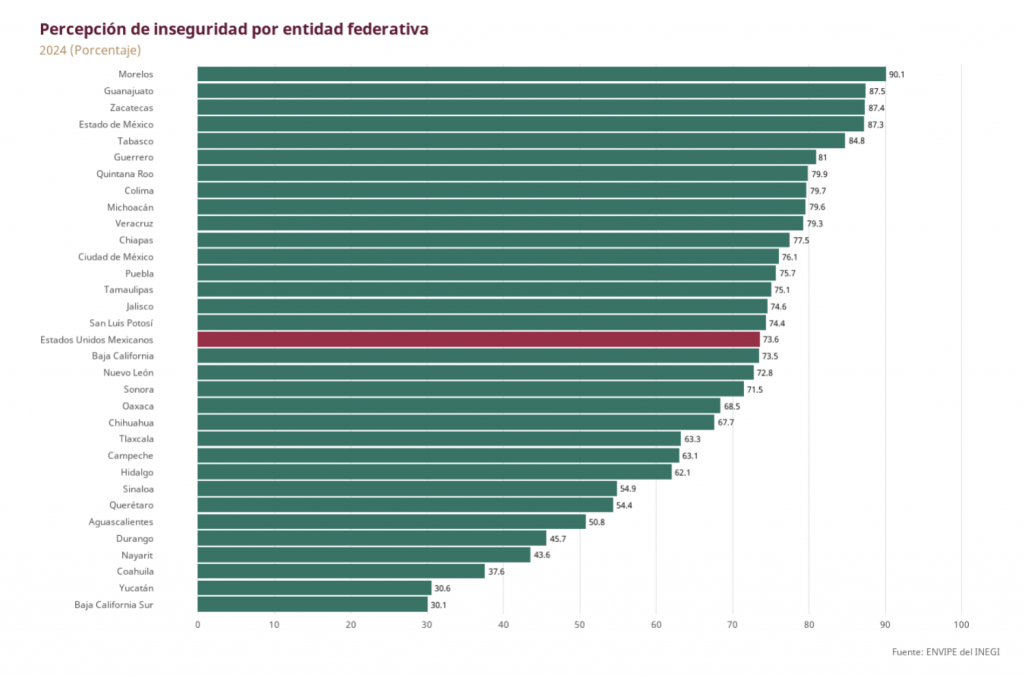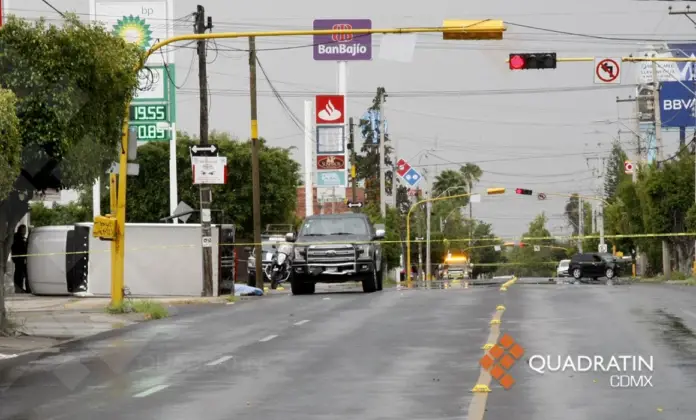By the fourth quarter of 2024, 61.7 percent of the population aged 18 and over residing in 91 cities considered it unsafe to live in urban areas, according to the National Urban Public Security Survey (ENSU) by INEGI (National Institute of Statistics and Census), reported in the National Public Security Strategy 2024-2030.
The document details that the states with the highest percentage of people who considered living in their city unsafe were: Morelos (90.1 percent); Guanajuato (87.5 percent); Zacatecas (87.4 percent); State of Mexico (87.3 percent); and Tabasco (84.8 percent).
In contrast, the states with the lowest percentages of perceived insecurity were: Coahuila de Zaragoza (37.6 percent); Yucatán (30.6 percent); and Baja California Sur (30.1 percent). The Mexican Government’s National Public Security Strategy 2024-2030 specifies that the perception of insecurity varies considerably by state.
Cities such as Villahermosa in Tabasco, Uruapan in Michoacán, Fresnillo in Zacatecas, and Culiacán in Sinaloa register a perception of insecurity among more than 90 percent of their population. In contrast, Los Cabos in Baja California Sur, San Pedro Garza García in Nuevo León, and Piedras Negras in Coahuila have levels of perceived insecurity below 20 percent, according to the National Survey of Public Security (ENSU).
“These regional differences reflect the complexity of the problem and the need to address public security with differentiated strategies,” he explains.

Source: mexico.quadratin




